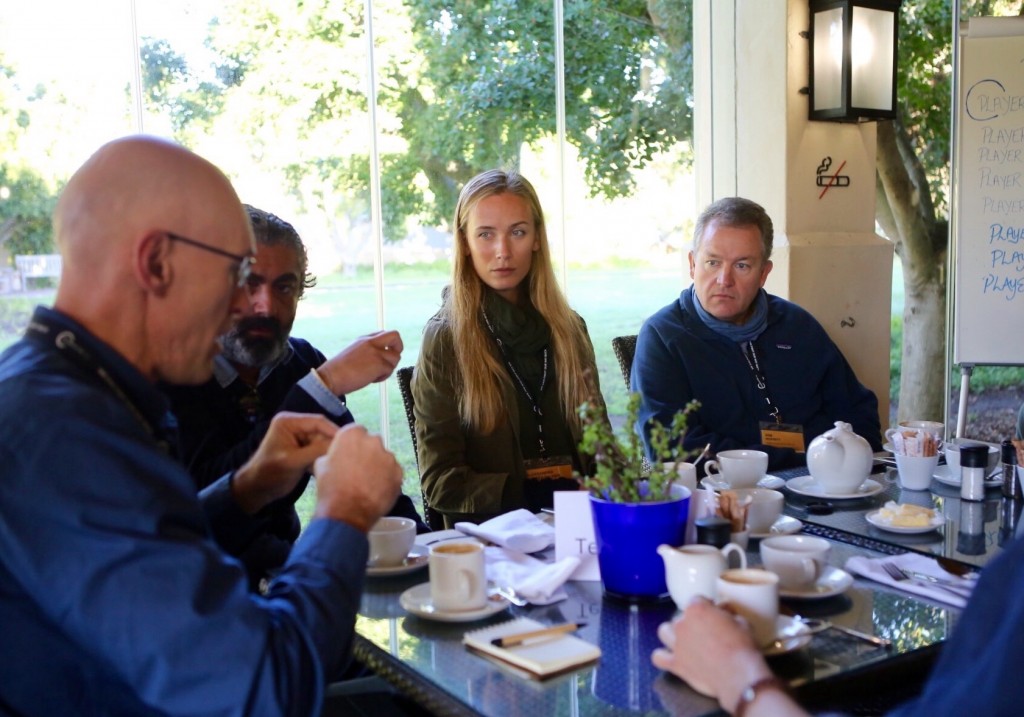REALITY CHECK: IMPROVE RETURNS TO THE LANDOWNER
After attending the first Conservation Lab un-conference this year, Rob Moffett, Managing Director at Ongava Game Reserve (PTY) Ltd considers the present day challenges facing conservationists and the measures required to make a true impact…
The challenge is to figure out options to improve economic returns to Governments, Communities and other land owners that will maintain the incentives that compel them to commit land to conservation-based (least harmful) use.
With exploding global demand for protein, by example, domestic livestock is an attractive land use option. It is less risky than tourism and a fraction of the investment (capital risk). Even more so on unsecured land i.e. state / communal / national parks which are unbankable. Among many other limitations unbankable land does not qualify as collateral, referred to as Dead Capital.
The challenge for conservationists is to figure out how to improve rentals derived from least harmful – conservation-based land use – for the landowners, be they the local Community, the State or Freehold. For instance, will carbon credits materialise? An attractive option as it is compatible with tourism rather than a substitute – so would be a brilliant top up for the land owner, over & above the rent received from tourism. Diversification case studies include the Barefoot Academy run by Aleksandra Orbeck-Nilssen, Founder of Nanofasa Conservation Trust and also the Himba myrhh project setup by IRDNC’s John Kasaona.
Through adding value to the landowner the temptation for more harmful land use options that substitute tourism e.g. Cropping, Forestry, Mining, domestic stock production etc. can be avoided.
The human record shows that what pays stays; for more info on the reality of conservation economics lookup Mike Norton-Griffiths and the fascinating insights he shares such as in How Many Wildebeest Do You Need?
Using the global donor (giving) environment as a proxy for the degree of general human interest in wildlife and conservation it is apparent that environmental causes attract less than 10% of total annual donor funds. Humanitarian causes attract 10 times the funding. Conservation and conservationists are a decided minority and within conservation there are a wide range of approaches, opinions and polarising issues. These serve to further divide the already tiny proportion (<10%) of conservation inclined supporters.
Divided we fall
Whereas setting aside the smaller differences we can unite our limited resources in order to make real impact, rather than the fragmented and uncoordinated efforts occurring in isolated pockets across the continent.
However, the old school remain deeply divided, positions have been taken and no apparent desire to entertain one degree of compromise anytime soon.
We have to accept that a unified front is unattainable in the short – to medium – term and we have to make do with the divided, fragmented situation as best we can.
Fussing over single species, while these are most often charismatic mega-fauna – and responsible for driving tourism dollars and donor funding (what little there is) is in itself a risky proposition. The challenge this represents is the old age question of fretting over the deck chairs while the Titanic sinks. Here I allude to the exploding, poverty-driven human population encroaching on the remaining wilderness areas, to global climate change, to diminishing bio-diversity and the other macro-threats to life on earth.
Whereas the number one priority of conservation should be to secure the very foundation that permits life on the planet in the first instance – the ecosystem services that provide oxygen, fresh water, biodiversity and carbon sequestration to mitigate climate change.
At the heart of the matter, the threat to the ecosystem services that permit life on earth – is the poverty driven human population explosion. The impact we humans place on the planet is unsustainable. Our common enemy is poverty. We urgently need to create circumstances to accelerate millions of people out of poverty. Studies and experience show that as soon as humans escape absolute poverty and begin to gain benefits as they get a step on the food chain – particularly marginalised rural women – who take control of their fertility and rapidly reduce from bearing 6 – 8 children to 2 children. Two children per woman (2,1 to account for infant mortality) is the sustainable human population replacement value.
We conservationists stand at a cross roads, we can continue agonizing over individual species / local projects etc which is all well and good. But understand this model will continue to succumb under the unrelenting human population tsunami. If we seek to truly make an impact for nature and the next generation – then we will need to combine forces to combat poverty. For that is where the true conservation battle will be won. Or lost.
The choice is ours












